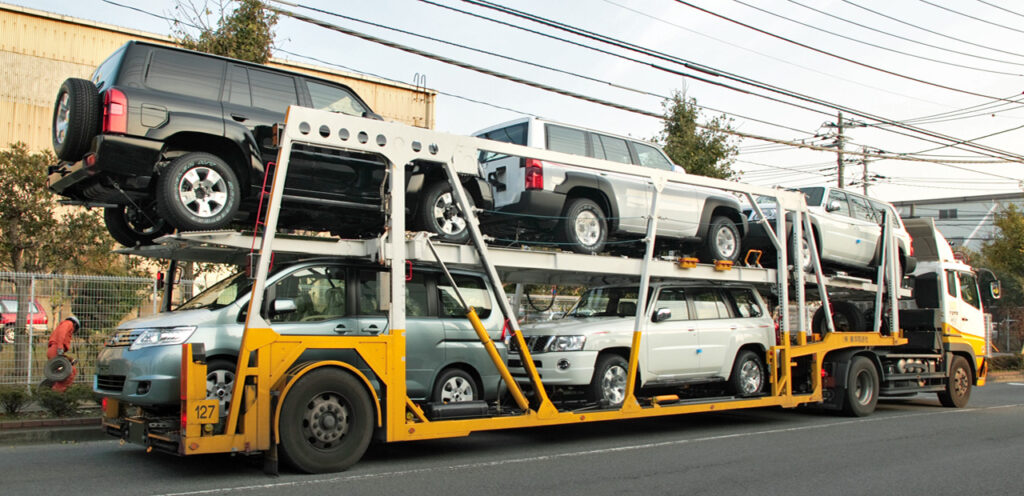The thrill of a road trip, the allure of the open road, and the comforting purr of the engine create a sense of freedom unique to driving. The modern car cabin enhances this experience with many centralized functionalities within an attractive touchscreen interface. From navigating your route, and adjusting the cabin’s temperature, to selecting your favorite tune, everything seems just a touch away. Amidst the enticing symphony of technology and mechanical prowess, we are left marveling at the convenience brought by these digital dashboards. However, beneath the sheen of this tech integration, a lurking question persists: Are we trading off safety for the sake of sophistication?

A Pathway to Driver Distraction
The first critical risk associated with car touchscreen controls lies in their potential to lead to severe driver distraction. Research from the University of Utah highlights that touchscreen interfaces can be significantly more distracting for drivers than traditional controls. This added distraction may cause drivers to take their eyes off the road more frequently and for longer periods, escalating the likelihood of accidents. There are more than 3,000 car accident fatalities each day across the globe, often due to driver distraction.
The Touchscreen Paradox: Utility Versus Risk
While offering enhanced functionality, touchscreen interfaces pose a paradox that could compromise road safety. The convenience these interfaces provide can lure drivers into a false sense of security, leading them to underestimate the danger posed by these systems. While they may make various vehicle functions easily accessible, the attention required to operate them could detract from the primary task of safe driving.
Also Read:
- Top 5 Best Jump Starters for Cars
- Top 5 Best Battery for Jeep Wrangler
- Top 5 Best Cordless Impact Wrench For Changing Tires
The Problem of Feedback: Visual Versus Tactile
Traditional vehicle controls, such as knobs and dials, provide tactile feedback that allows drivers to operate them without looking. Touchscreen interfaces, in contrast, require visual engagement to confirm the successful activation of controls or functions. This shift from tactile to visual feedback poses another significant risk, as drivers must divert their gaze from the road if only momentarily, to interact with their vehicle’s systems.
The Danger of Complexity and Cognitive Load
The complexity inherent in touchscreen interfaces can add to a driver’s cognitive load, potentially impairing their ability to react promptly to sudden road events. Operating a touchscreen requires the brain to process more information simultaneously, from interpreting visual symbols on the screen to coordinating the precise movements needed to activate controls. This cognitive burden can be detrimental and may slow reaction times in critical driving situations.
The Risks of Overreliance on Touchscreen Technology
More reliance on touchscreen technology can lead to a false sense of control and underestimating its associated risks. With the convenience of these systems, drivers may become overly confident in their ability to multi-task while driving, not realizing the dangerous distractions these systems can cause. Overconfidence and a lack of awareness about these risks can lead to dangerous driving behaviors that increase the likelihood of accidents.
Manufacturer Reconsideration: A Return to the Basics
In light of the mounting evidence indicating the dangers associated with touchscreen interfaces, some manufacturers are beginning to reassess their design choices. They are reintegrating traditional physical controls into their vehicles as part of this trend. The return to knobs and buttons may seem like a step back, but it is a precautionary measure addressing the safety concerns of touchscreen technology.
Conclusion
While undeniably appealing, the allure of touchscreen technology in automobiles is not without its share of hazards. Integrating such interfaces presents a series of serious concerns, from driver distraction to the complexity and cognitive load. While the advantages of this technology are manifold, it is paramount that its risks are not overlooked. Some manufacturers are already taking note, reevaluating their design strategies to reintegrate traditional controls in their latest models. This shift reflects a growing understanding within the industry: innovation must not compromise safety.
As consumers and road users, our role is vital in this equation. We must stay informed, understand the potential risks and ensure our driving habits adapt to the evolving technological landscape of our vehicles. It’s essential that as we navigate this new terrain of automotive technology, we prioritize our safety and the safety of those around us. It’s not just about embracing the new, but also appreciating the tried and tested, and finding that crucial balance between the two.









